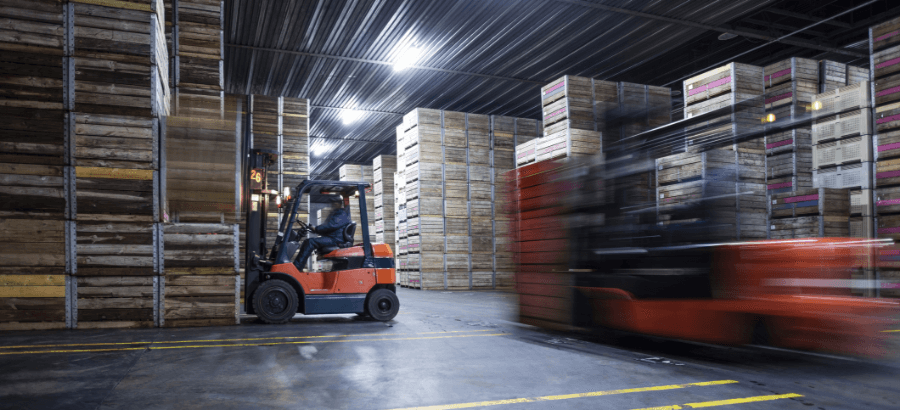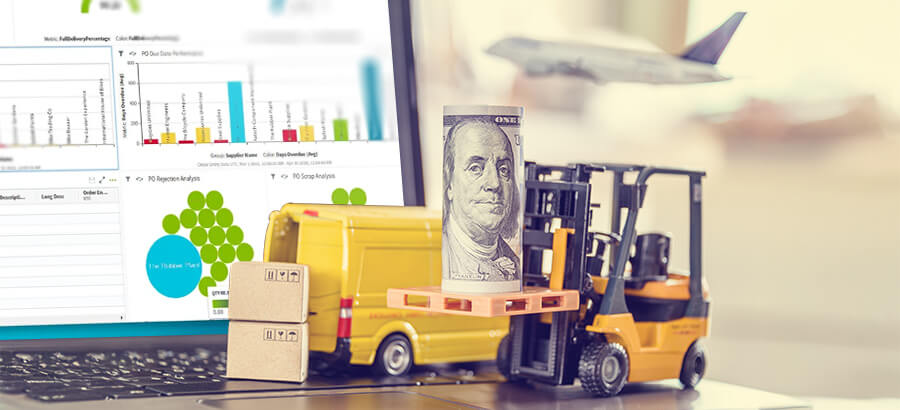Massive supply chain disruptions are being experienced around the globe, and the causes are many and complex. Although it’s easy to attribute these difficulties to the Covid-19 pandemic, there is far more to the current crisis than first meets the eye.
Factors affecting the supply chain
1. The pandemic
There’s no doubt that the pandemic, with its harsh lockdowns and impact on economies worldwide, has played a dramatic role in the supply chain disruptions being experienced by manufacturers. Many businesses in the US, and elsewhere, were sourcing their componentry from China. When China shut down operations in a bid to contain Covid-19, supply chains ran out of material. And when China started up again, other economies were shutting down or still shutdown and uncertain when they were going to open up. Staff were still at home and the skeleton staff simply piled up the containers in the port.
2. New trade routes
This situation has been compounded by the fact that Covid-19 essentially exposed what was already an under-performing process thanks to factors such as the US-China trade war, less efficient shipping routes and a huge drive to cut costs by consolidating loads. For example, one of the main problems with Asian-US trade is that all container ship deliveries are now routed to the West Coast, even though the bulk of America’s manufacturers are based on the East Coast. This is to avoid more costly routes such as the Panama Canal or taking the long haul around the tip of Africa or South America. The latest super container ships do not fit through the Panama Canal and must take the long route and travel around Cape Horn to get to the US East Coast harbors.
3. Shipping challenges
The shipping route to the USA and the route to Europe are now the most lucrative routes and consequently have the most ships allocated to them. To help consolidate loads and reduce costs of shipping, new and bigger container ships capable of carrying 18,000 containers are being built – the size of these container ships has doubled in the last 15 years. As economies start up there is also an inevitable increase in demand, which has resulted in around 25% more ships entering the fray. On the West Coast of the US, there are five ports, of which there are two main ports capable of handling these ships – Long Beach and Los Angeles, which is where most deliveries are now headed. This has in turn caused massive bottlenecks in these two harbors.
Traveling time from Asia to the US is two weeks, followed by a two-week wait for a berth in the harbor and further delays in off-loading and moving the containers across the continent by truck, a link in the supply chain, which is hampered by insufficient vehicles and drivers, estimated as high as one million drivers. These issues are being faced by manufacturers across the board with no simple solution in sight.
A final complication contributing to the delay in delivery times is the location of all the shipping containers. Previously there was a regular movement of containers from the USA to China and a return to the USA. With trade embargoes and trade restrictions, this regular flow of containers is now only a one-way trip, from China to the USA. There are now huge stockpiles of containers in the USA with no foreseeable way to move them to China.
The fundamental problem is that many organizations caught up in this situation are using business models which were already out of date before the pandemic. The first step to a healthier future lies in identifying what can be done in the short-term and then defining a longer-term solution.
How can businesses create the supply chain of the future?
The supply chain of the future will not use the business models which are currently in place. It will be all about strategic supplies, strategic procurement, supply agreements and keeping buffer stocks in country so that all the requirements are met to keep business going while long-term plans are formulated and implemented. While the short-term plans focus on safety stocks throughout the supply chain (in most cases, the priority to keep the factories fully operational remains). The long-term plans are far more aggressive and include fundamental changes like near-shoring, or even on-shoring, to avoid the lengthy supply chain and improve control and availability of all raw materials.
Use data to improve operations
To assist with the short-term solution, the answer is an extensive data-gathering exercise. Getting as much data as possible and ensuring that it is relevant data, starting with customer demand and what needs to be produced and then working back up the supply chain to calculate what raw materials are required and available and ultimately, which orders can be met. If you need to develop a local supply, how long will it take and what will the required capacity be?
It’s probably too late to reconfigure supply chains at this point. While there’s no quick and easy solution in the short term, your best bet is to evaluate how best to use every piece of raw material you have available, profitably – the basis of the Toyota production System. Profitability and cash flow are the keys to survival and, ultimately, prosperity.
Align your business and supply chain strategies
In the long term, manufacturers need a robust business strategy that drives their supply chain strategy. This makes it possible to look at a completely new supply chain business model and build a resilient supply chain flexible enough to manage the types of issues described above.
Using technology to ease your way forward
These longer-term plans will give your organization stability in an uncertain world – and that’s where the use of a fully-integrated Enterprise Resource Planning (ERP) solution will help you capitalize on your strengths and opportunities.
The benefits of ERP
A major benefit of an ERP solution is that it generates business data continuously. Of course, the key to success is being able to analyze that data so that you can get the maximum value out of it. A comprehensive range of tools has been built into the SYSPRO ERP solution to help you do just that. From procurement to supplier, customer account and cash flow management, SYSPRO will make it easier to put cash in the bank which you can use to grow your business. For example, you can plan your factory based on fixed orders, understand exactly what the customer demand is, capture that demand in the system and see precisely what needs to be made and what components are needed to do so. The delivery delays currently being experienced have impacted lead times, so clarity is crucial. With SYSPRO, you can verify all the data you need to make accurate buying and manufacturing decisions.
Manufacturing Operations Management (MOM), Warehouse Management, Materials Resource Planning and the full spectrum of financial systems are just a few of the SYSPRO tools you can use to analyze your data and turn it into a competitive advantage. With advanced planning and scheduling, up-to-date stock figures, landed cost tracking and a thorough understanding of your material requirements, you will have an accurate view of your business and be ideally placed to act promptly and effectively.
With the analytics which have been built into SYSPRO, key reports can be developed and generated at the push of a button, giving you the latest information in real time. You can see critical stats such as outstanding customer accounts as well as an age analysis of those accounts and interpret the data in a meaningful way.
The supply chain of the future will be built on data and the ability to get all that data as and when you need it. Essentially, you need access to your data and the ability to analyze, interpret and understand what it’s going to do for your business. The single biggest learning from the pandemic is that the supply chain is only complete when the cash is in the bank, and until businesses set that as the priority the current batch of problems will remain. The current business models of “leveraging” cash flow to defer payments has led to the demise of many businesses over this period. No business is sustainable without a positive cash flow, and that is not a new approach to business.






